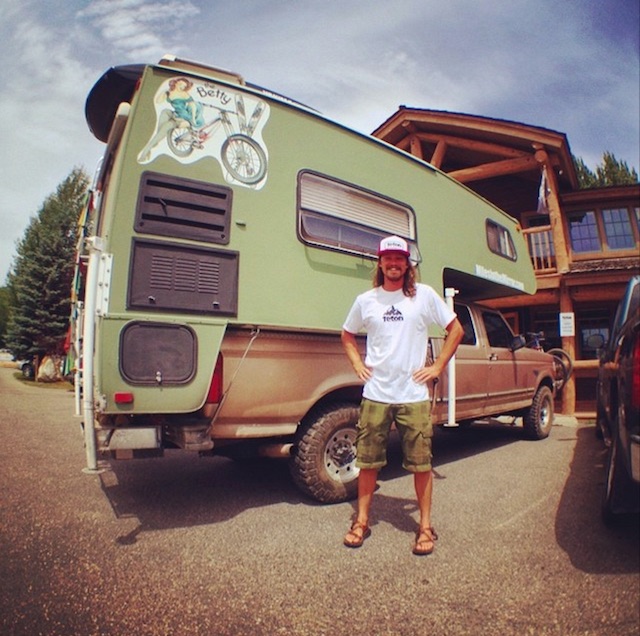 After living the #vanlife for almost two years, TGR Stash member Matt Reichel is helping you live your own life on the road. Ryan Dunfee photo.
After living the #vanlife for almost two years, TGR Stash member Matt Reichel is helping you live your own life on the road. Ryan Dunfee photo.
As TGR Stash Matt Reichel started burning out on his job in the Mid-West as a construction project manager, his love of mountain biking was leaving him daydreaming about days touring bike parks in Colorado and the Northeast and the small taste of exploration and adventure those long-weekend burst trips had granted him. So, when it all became too much, Matt made the move: he bought an RV over the phone from a guy in Arizona, started liquidating most of his belongings, saving money, and putting himself on a budget. Then he quit his job, and moved into a campsite in Breckenridge for the winter .
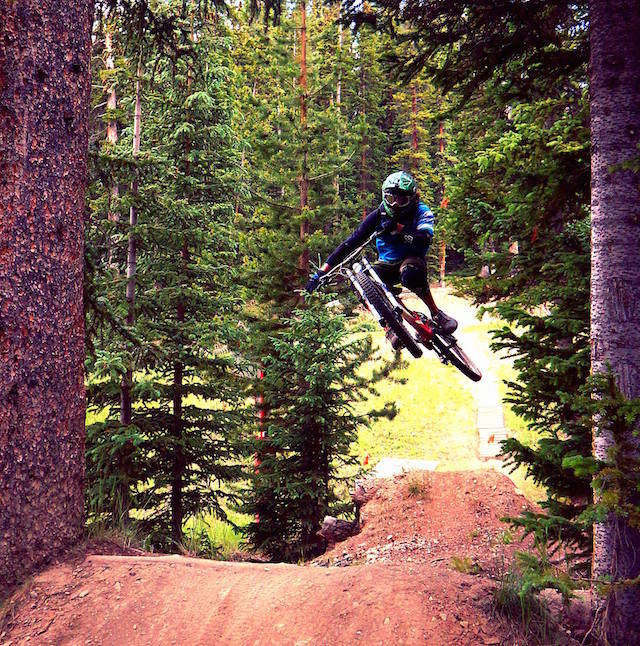 Matt first got into the totally mobile lifestyle while fulfilling a dream of touring as many bike parks around the country as possible. Everett Pelkey photo.
Matt first got into the totally mobile lifestyle while fulfilling a dream of touring as many bike parks around the country as possible. Everett Pelkey photo.
After working as a ski instructor, he used a nationwide bike park pass from MTBParks.com as an excuse to road trip it around the West hitting as many bike parks a humanly possible, from Crested Butte to Angel Fire to Steven’s Pass. He swapped vehicles from an RV to a truck-top camper, and after almost two years living on the road, decided to use his experience and enthusiasm for the mobile lifestyle to start his own adventure van rental company, Into The Wild Expedition Rentals . He bought a 4X4 Sportsmobile van in San Francisco and set it up in Denver, a perfect hub for shorter-term off road adventures, with Rocky Mountain National Park, all the I-70 ski areas, and desert spots like Moab and Fruita all within striking distance.
 Matt's new company, Into the Wild Expedition Rentals, allows folks to live the van life from the comfort of this kitted-out badass Sportsmobile. Matt Reichel photo.
Matt's new company, Into the Wild Expedition Rentals, allows folks to live the van life from the comfort of this kitted-out badass Sportsmobile. Matt Reichel photo.
“While I was traveling, I was meeting all the people that were living this RV lifestyle–the van life–and talking with lots people who want to do it, or wish they could do it, but didn’t have the time or resources to. I found an opportunity to cater to the people who want to do something more short term,” he said. Families who want to get out and camp away from the crowds or groups of friends who want to go spend a week climbing or biking somewhere, and have a turnkey setup they can throw all their gear in and go, can rent the Sportsmobile for about $1,000 for a long weekend or $2,300 for a full seven days , with cheaper rates in the winter. The van is fully kitted out with beds and linens, cooking equipment, bike and ski racks, a tent, and sleeping bags, with the option to make Matt fully stock it with food and booze.
How To Bring Your Own Adventure Vehicle To Life
Of course, for those who want their own setup, Matt has a wealth of experience from his time living on the road, going deep off of it, and recovering from every kind of potential disaster imaginable. So we decided to tap him for his best info. on how to go about purchasing, modifying, or otherwise bringing to life your own adventure rig for anything from weekend jaunts to a permanent home:
#1: The Easiest way to do it is with trucktop camper
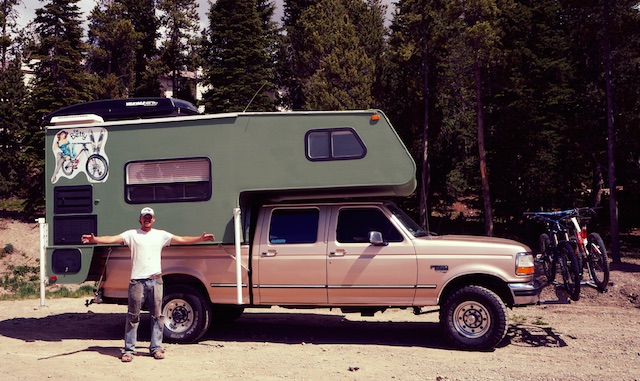 After living in an RV for the first year, Matt switched gears to a hardside trucktop camper. Matt Reichel photo.
After living in an RV for the first year, Matt switched gears to a hardside trucktop camper. Matt Reichel photo.
I really liked my setup with the truck and the truck camper, because at the end of the day, you still have a vehicle that could be a daily driver, as opposed to an RV. That’s probably the simplest way to do it. In that world, you’re looking at pop-up style campers or hardside units. The pop-ups have a lower center of gravity and are easier to go off road with, while the hardside campers are easier to live out of and generally better insulated if you’re winter camping.
A really good camper brand that’s a pop-up style is Four Wheel Campers, and they’re actually designed for off-roading. They just have a heavier-duty frame system, and the pop-ups keep the center of gravity much lower. When I skidded off the road with my hardside camper, it actually twisted the frame of my trucks and jammed the window shut on the driver’s side.
But the hardside is nice because you can walk right into it and it’s a little better for winter camping. And for urban camping, it’s really handy because you don’t have to do any setup. You can park it, hop right in, and no one will know if you’re camping in their front yard. A good hardside brand is Big Foot. They make a really serious four-season camper. I paid $3800 for a used 2003 model.
There are literally hundreds of designers. You get what you pay for. You can find a used one for $1000, but the biggest thing is checking for water damage. You have to check to see if the roof has been leaking. If you can hook it up to power and water and run the pipes and electricity while you’re looking at it, I highly recommend it. The camper I had was pretty big, it was a quality brand and it held up pretty well, but I ended up having a leaking water line that ruined the floor.
#2: To 4X4 Or Not, And What Engine To Get
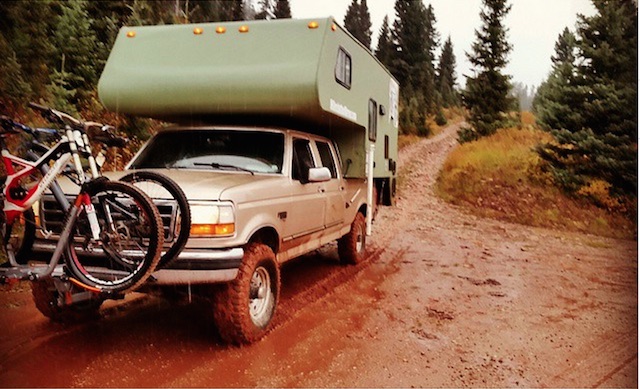 "You don't need four wheel drive... until you need it." Matt Reichel photo.
"You don't need four wheel drive... until you need it." Matt Reichel photo.
You don’t need four wheel drive… until you need it. I got myself into a pretty serious situation at the Red Bull Rampage last fall, where the campsite we were at in Utah was flooding and the water went from a stream you could walk across without getting your feet wet to a raging river. The Sherriff had already closed the road and was evacuating people out of the campsite. He wouldn’t let me throw but I had everything in my life in that truck, and begged him to let me do it.
I literally had an inch to go on the edge of this greasy access road without falling off. The camper was flopping around, and I barely made it up to the pavement. Anoter time, I was camping in the San Juans and went a little farther than I should have, I camped for the night after needing four wheel drive to get in there. It rained and snowed all night long and turned the road into a total grease fest. I pretty much did an uncontrolled slide down an entire hill, and the truck and camper went sideways. I hit a waterbar and slammed the camper against the side of a ditch; I don’t know how it didn’t tip over. But I would have never made it out without four wheel drive.
4X4 is a requirement for me for anything I’d be doing with a camper rig. But you pay more for them and there’s more maintenance. It comes down to how far back do you want to go.
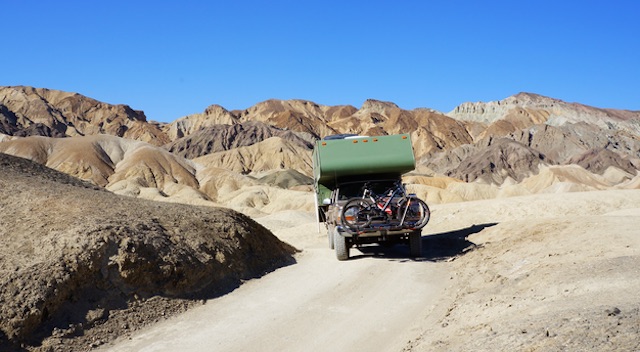 Whether you need a 4X4, or a bigger engine, depends entirely on where you really think you're going to drive your rig. Matt Reichel photo from Death Valley.
Whether you need a 4X4, or a bigger engine, depends entirely on where you really think you're going to drive your rig. Matt Reichel photo from Death Valley.
With regards to engine size, anywhere you’re going over high mountain passes, like here in Colorado, you might need more power to tow all that extra weight uphill. I’m a diesel guy, I’m in love with those 7.3 liter Powerstroke diesels, and I’ve never had an issue with too much weight. I went over Vail Pass on I-70 going 80 MPH. The Sportsmobile has a V10, which I’m really glad it has. Even a V8 was underpowered. But people drive those VW Westfalias all over hell with those little four-cylinder engines. You wont’ be flying, but you’ll get there. But I would always go bigger.
I put together a whole breakdown of different road trip vehicles and their advantages and disadvantages that’s a great place to get a sense of RV’s versus different classes of trucks and vans, all the way up to the uber-expensive Earthroamers.
#3: Put up for a newer vehicle than what you want to pay for
When looking for a vehicle, spend the extra money to get a better vehicle than what you want to spend that’s a little newer or with lower miles. That’s going to save you headaches on the road. If you’re broken down 50 miles down a service road, you’re going to wish you bought the more expensive vehicle. Especially if you’re getting a loan. A couple thousand dollar difference only makes a $20 a month on your loan.
A truck is typically going to be a little more expensive, especially if it has four wheel drive. You can find an old cargo van pretty cheap, but it could have been a delivery vehicle and been absolutely beat to hell.
#4: You’ll never regret a solar setup
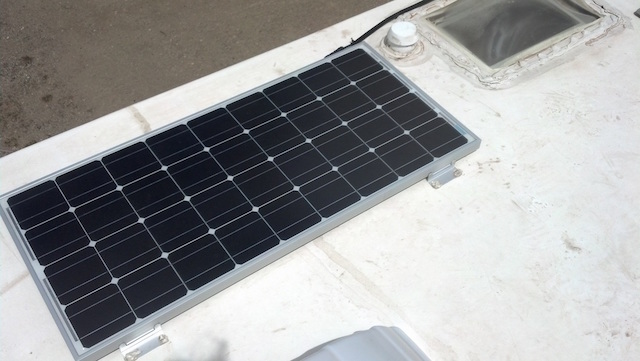 Matt's 100-watt is more than enough for phone, cameras, lights, computer, and even heating. Matt Reichel photo.
Matt's 100-watt is more than enough for phone, cameras, lights, computer, and even heating. Matt Reichel photo.
If you’re going to be going off-grid, you will never regret a solar setup. I have a 100-watt kit that, not including the batteries, cost $300 from a company called Renogy Solar. It kept an extra car battery charged all the time, and then I hooked it up to an inverter so I had a USB plugin. I charged my phone, computer, and cameras with that. I could run all the lights and a heater, too. Solar is really easy to do yourself and very handy.
#5: How To Set Up A DIY Adventure Van
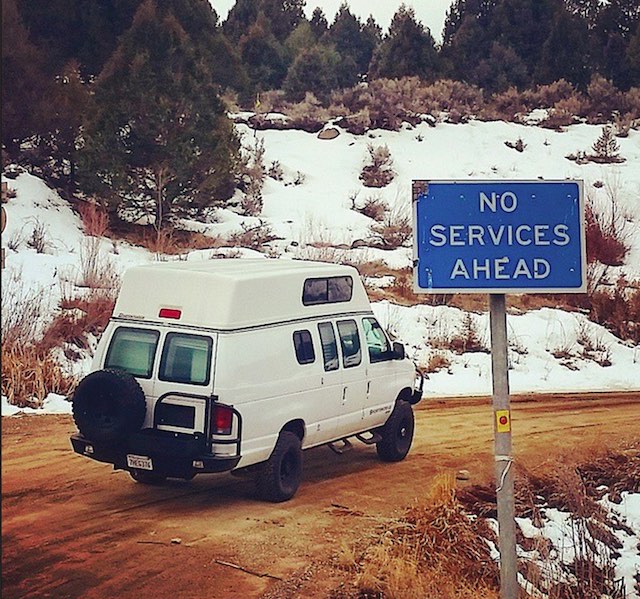 You don't need a Sportsmobile to get the job done, but any DIY van conversion needs a few basics. Matt Reichel photo.
You don't need a Sportsmobile to get the job done, but any DIY van conversion needs a few basics. Matt Reichel photo.
The vans are great; there’s a lot of room in those cargo vans. I recommend either a Ford or Chevy cargo van or a Sprinter, which are a little pricier with a Mercedes diesel engine that gets better mileage, but which are very popular with the van life crew. But you can do your own conversion to a Ford cargo van fairly inexpensively, and the majority of people were doing it on the cheap; not rocking a Sportsmobile with a satellite on top. The people out there on the cheap know what they need and they don’t need.
The basics: For your van, you want a bed setup. You want solar. Fresh water. A small stove, whether it’s a standalone Coleman or an installed propane setup. And maybe a heater, depending on your season of travel.
Emergency supplies: If you’re getting a two-wheel drive vehicle, bring chains and a tow strap. And lots of tools. I was so glad I had every tool I could possibly ever need. I carried a jumper box, which you charge like a little battery and you can jump your own car with it.
I always carried a couple fuel filters, because they go without warning, and spare gas or diesel. There were definitely a few times where I had to use my five spare gallons to get back to civilization. Or you can just rent our Sportsmobile and I’ll have it all set up for you.
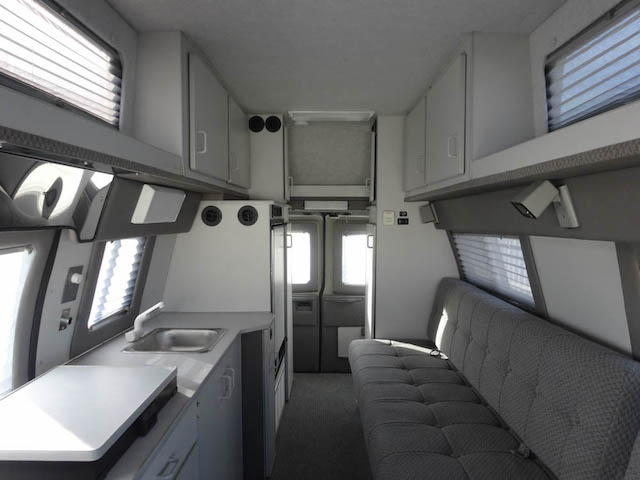 The far nice end of the spectrum is a turnkey setup like Matt's rentable Sportsmobile, but you have to decide what you really need, or don't, to keep it on the cheap. Matt Reichel photo.
The far nice end of the spectrum is a turnkey setup like Matt's rentable Sportsmobile, but you have to decide what you really need, or don't, to keep it on the cheap. Matt Reichel photo.
A basic water setup: Bring plenty of your own water, but if you’re doing your own van, you don’t necessarily need your own pump. Lots of people do overhead five-gallon tanks that gravity drain into a little sink, with a catch tank below that.
Heating: For your own van conversion, you can get a mini RV furnace that would run off your electricity, or you can do propane if you’re going to do a fully-installed unit. Otherwise, you can get little standalone heaters that can run on little bottles of propane. But it’s critical to add a CO2 detector if you’re going to use any amount of propane.
I probably only used my heater once or twice in the spring, it’s more of a luxury if you’re not camping in the dead of winter to dry things out. I mostly only used propane for my stove.
Insulation: Lots of people insulate their vans, you can get that reflective type with shiny skin that you glue right to the walls, floor, and roof. Then people do tongue and groove wood siding or a thin wall of siding that you can bend and curve to match the van.
Follow Matt Reichel in the TGR Stash for more snapshots from the mobile lifestyle and be sure to check out Into the Wild Expedition Rentals for your next adventure.



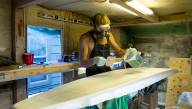
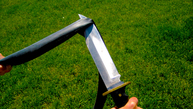



__video_thumb.jpg)
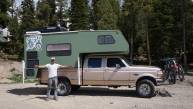

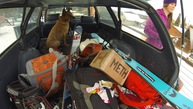
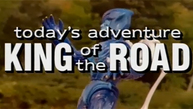
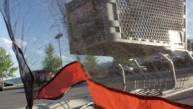
Olaus Linn
April 21st, 2015
This is awesome. My lady and I desperately want to get an adventure van setup.
Ryan Dunfee
April 21st, 2015
Just don’t drown in the Adriatic, then you can earn the right to build up a land yacht Olaus.
a.d.85
May 9th, 2015
Nice work… we recently restored a 1973 Bell Manufacturing canned-ham style trailer as an adventure rig. Check out the restoration process here - http://alexdeckard.com/1973-bell-manufacturing-canned-ham-adventure-rig/ as well as the maiden voyage - http://alexdeckard.com/bell-vintage-camper-adventure-rig-maiden-voyage/